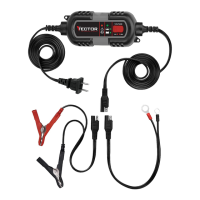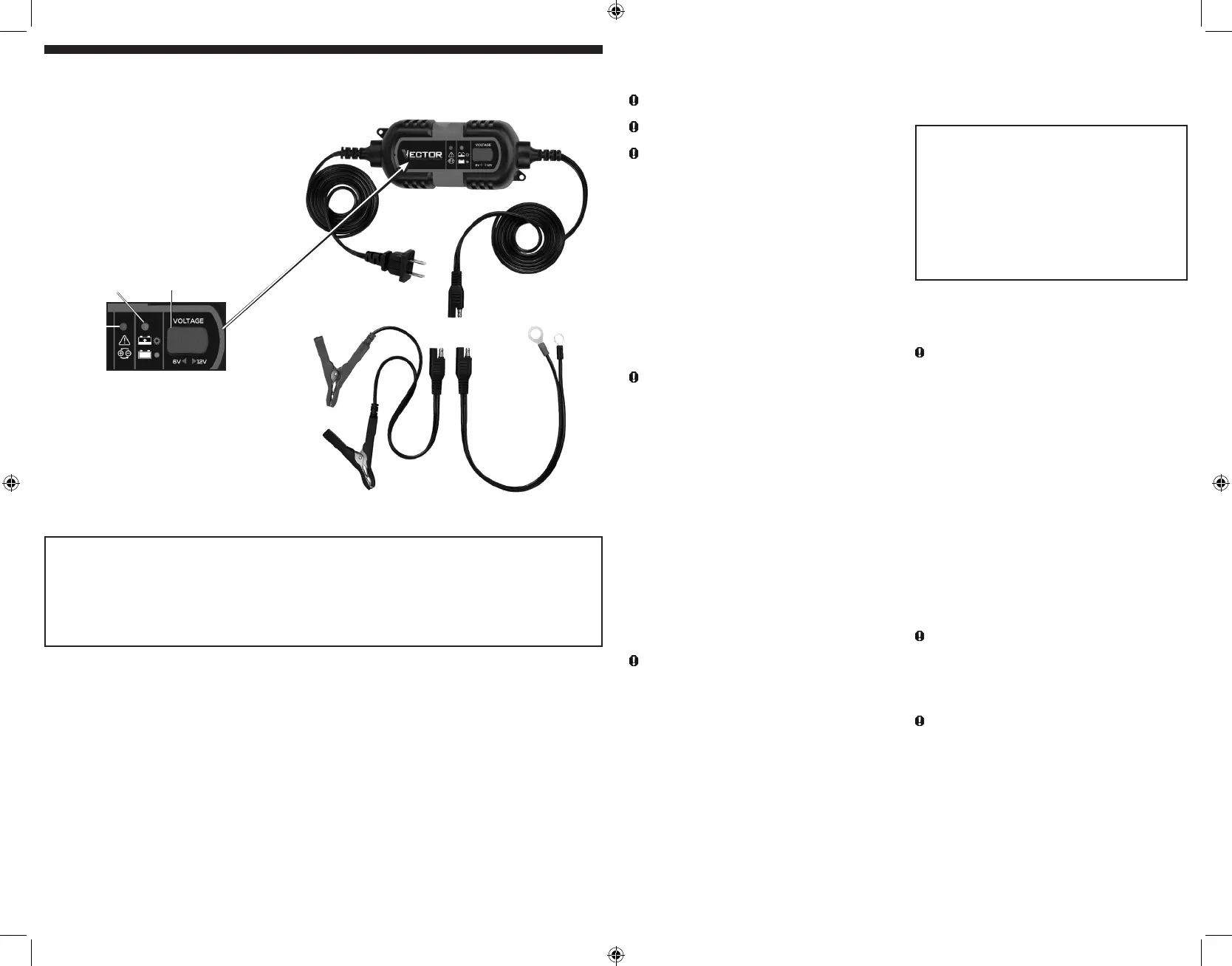32
SAFETY GUIDELINES /
DEFINITIONS
DANGER: Indicates an imminently hazardous situation which, if not
avoided, will result in death or serious injury.
WARNING: Indicates a potentially hazardous situation which, if not
avoided, could result in death or serious injury.
CAUTION: Indicates a potentially hazardous situation which, if not
avoided, may result in minor or moderate injury.
CAUTION: Used without the safety alert symbol indicates potentially
hazardous situation which, if not avoided, may result in property damage.
RISK OF UNSAFE OPERATION. When using tools or equipment,
basic safety precautions should always be followed to reduce the risk of
personal injury. Improper operation, maintenance or modification of tools
or equipment could result in serious injury and property damage. There
are certain applications for which tools and equipment are designed.
Manufacturer strongly recommends that this product NOT be modified
and/or used for any application other than for which it was designed. Read
and understand all warnings and operating instructions before using any
tool or equipment.
READ ALL
INSTRUCTIONS
WARNING: Read and understand this instruction manual before
using this unit. Failure to follow all instructions listed below may result
in electric shock, fire and/or serious injury.
IMPORTANT SAFETY
INSTRUCTIONS
GENERAL SAFETY WARNINGS AND
INSTRUCTIONS
• This unit was designed for household use only.
• Avoid dangerous environments: don’t use the charger in damp or wet
locations. Don’t use charger in the rain.
• Keep children away. All visitors should be kept at a distance from work
area.
• Store indoors. When not in use, the battery charger should be stored
indoors in dry, and high or locked-up place — away from reach of
children.
• Do not operate near flammable liquids or in gaseous or explosive
atmospheres. Sparks might ignite fumes.
• Unplug the battery charger when not in use.
DANGER: Never alter AC cord or plug provided; if it will not fit
outlet, have proper outlet installed by a qualified electrician. Improper
connection can result in a risk of an electric shock.
SPECIFIC SAFETY INSTRUCTIONS FOR
POWER CORDS
• Don’t abuse cord. Never carry appliance by cord or yank it to disconnect
from receptacle. Keep cord from heat, oil, and sharp edges. Pull by plug
rather than cord when unplugging the unit.
• Ground Fault Circuit Interrupter (GFCI) protection should be provided on
the circuits or outlets to be used. Receptacles are available having built in
GFCI protection and may be used for this measure of safety.
Extension cords
• An extension cord should not be used unless absolutely necessary.
Use of improper extension cord could result in a risk of fire and electric
shock. If an extension cord is used, make sure that the pins of the
extension cord are the same number, size and shape as those in the
charger.
• Make sure your extension cord is in good condition. When using an
extension cord, be sure to use one heavy enough to carry the current your
product will draw. An undersized cord will cause a drop in line voltage
resulting in loss of power and overheating. The following table shows
the correct size to use depending on cord length and nameplate ampere
rating. If in doubt, use the next heavier gauge. The smaller the gauge
number, the heavier the cord.
Recommended Minimum AWG Size for Extension Cords for Battery Chargers
AC Input Rating American Wire Gauge (AWG) Size of Cord
Amperes Length of Cord, feet (m)
Equal to or But less
25 (7.6) 50 (15.2) 100 (30.5) 150 (45.6)
greater than than
0 2 18 18 18 16
2 3 18 18 16 14
3 4 18 18 16 14
4 5 18 18 14 12
5 6 18 16 14 12
6 8 18 16 12 10
8 10 18 14 12 10
10 12 16 14 10 8
12 14 16 12 10 8
14 16 16 12 10 8
16 18 14 12 8 8
18 20 14 12 8 6
Power Cord Safety: This appliance has a polarized plug (one blade is
wider than the other) as a safety feature. This plug will fit into a polarized
outlet only one way. If the plug does not fit fully into the outlet, reverse the
plug. If it still does not fit, contact a qualified electrician. Do not attempt to
defeat this safety feature.
WARNING – Shock hazard:
• If an extension cord is used, make sure that:
a) the pins of extension cord are the same number, size and shape as
those in the charger,
b) the extension cord is properly wired and in good electrical condition,
c) the wire size is large enough for the AC rating of the charger as
indicated in the table in the previous section.
SPECIFIC SAFETY INSTRUCTIONS FOR
BATTERY CHARGERS
• Use of accessories and attachments: The use of any accessory or
attachment not recommended by manufacturer for use with this battery
charger could be hazardous.
• Stay alert. Use common sense. Do not operate this equipment when you
are tired or impaired.
• Check for damaged parts. A part that is damaged should be properly
repaired or replaced by manufacturer before further use unless otherwise
indicated elsewhere in this instruction manual.
• Do not operate the battery charger if it has received a sharp blow, been
dropped, or has been otherwise damaged in any way. Return it to the
manufacturer for repair.
• THIS UNIT IS NOT FOR USE BY CHILDREN AND SHOULD ONLY BE
OPERATED BY ADULTS.
WARNING – Burst hazard:
• Do not use the unit for charging dry-cell batteries that are commonly
used with home appliances. These batteries may burst and cause
injury to persons and damage property. Use the unit for charging a
LEAD-ACID battery only. It is not intended to supply power to a low-
voltage electrical system other than in a starter-motor application.
• Never attempt to charge non-rechargeable batteries.
WARNING – Risk of explosive gases:
• WORKING IN THE VICINITY OF A LEAD ACID BATTERY IS DANGEROUS.
BATTERIES GENERATE EXPLOSIVE GASES DURING NORMAL BATTERY
OPERATION. FOR THIS REASON, IT IS OF THE UTMOST IMPORTANCE
THAT EACH TIME BEFORE USING THE BATTERY CHARGER YOU READ
THIS MANUAL AND FOLLOW INSTRUCTIONS EXACTLY.
• To reduce the risk of battery explosion, follow these instructions and those
published by the battery manufacturer and manufacturer of any equipment
you intend to use in the vicinity of the battery. Review cautionary markings
on these products and on the engine.
• This equipment employs parts (switches, relays, etc.) that produce arcs or
sparks. Therefore, if used in a garage or enclosed area, the unit MUST be
placed not less than 18 inches above the floor.
LED Indicators
Red (Fault): Bad connection, battery not able to accept
charge, reverse polarity hook-up.
Green (Charge Status): Blinking – connection correct and
charging; Solid – fully charged.
6V/12V Switch
The unit has two voltage rate settings (6V, 12V) controlled by one
switch. Set the switch to either 6V or 12V depending upon the
battery you are charging.
FEATURES
BLACK (NEGATIVE, –)
CLAMP
CHARGER
CONNECTORS
BATTERY TERMINAL
RINGS
6 VOLT / 12
VOLT SWITCH
FAULT LED
INDICATOR
CHARGE STATUS
LED INDICATOR
RED (POSITIVE, +)
CLAMP
110/120 VOLT
AC PLUG
This device complies with part 15 of the FCC rules. Operation is subject to the following two conditions: (1) this device may not cause harmful interference, and (2) this device must accept any interference
received, including interference that may cause undesired operation.
This equipment has been tested and found to comply with the limits for a Class B digital device, pursuant to part 15 of the FCC Rules. These limits are designed to provide reasonable protection against harmful
interference in a residential installation. This equipment generates, uses and can radiate radio frequency energy and, if not installed and used in accordance with the instructions, may cause harmful interference
to radio communications. However, there is no guarantee that interference will not occur in a particular installation. If equipment does cause harmful interference to radio or television reception, which can be
determined by turning the equipment off and on, the user is encouraged to try to correct the interference by one or more of the following measures:
• Reorient or relocate the receiving antenna.
• Increase the separation between equipment and receiver.
• Connect the equipment into an outlet on a circuit different from that to which the receiver is connected.
• Consult the dealer or an experienced radio/TV technician for help.
Changes or modifications not approved by the party responsible for compliance could void user’s authority to operate the equipment.
BM315V_ManualENSP_051520.indd 2-3BM315V_ManualENSP_051520.indd 2-3 5/15/2020 1:59:25 PM5/15/2020 1:59:25 PM

